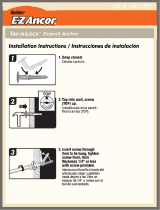
irements And
Exhaust and Dryer Maintenan_
1. Alter one year of use, the interior and complete
exhaust system of the dryer Should be examined and
cleaned if necessary.
2. Before one year of use, when drying performance has
become unsatisfactory, please exanfine and clean the
exhaust duct for t'mtmr &ying performance.
3. Check the weather h_ds frequently m ensure the
damwrs are moving freely, that the dampers are not
pushed in and that nothing has been set against the
damwrs.
4. A qualified service person or company shoukt be used
to perform this maintenance.
5. A Flexible Metal Vent Kit, available at extra cost, can
be used to exhaust the dryer when it is placed in hard
to :reach places. This Kit comes in two pieces, one of
which is attached m the dryer and file other is attached
to the wNl exhaust outlet. Following attachment of the
two separate pieces to the dryer and the wall, the @er
may be returned m its finn _silion_ after which the
two pieces themselves can be connected.
7. Ordinarily, the dryer drum will need no care. Wipe the
exterior of the dryer as required, and Mways wi_ the
exterior of the dryer in the event any deterg)2nt, Neach,
or other washing products is spilled on the d_er.
8. (]ean the control panel with a damp cloth as
necessary. Warning: spray pro-wash products may
damage the finish of the control pmlel.
9. Please clean the lint :filmr either I7_li}redrying each
load or after drying each load.
10. Always make sum the lint filmr is clean before
starting a new load, N_'cause a clogged lint filmr may
increase @rag times.
11. Annually :remove the lint t'ilter and attach it m the
vacumn duct. See imm #2 aN_ve.
12. Please nora that the wirh_g diagram is provided inside
the &yet control hood. Label all wires prior to
discormection when servicing the dryer, because
wiring errors can cause serious injury to you and your
&yeJ:
Cleaning the Lint Screen
I.
2_
3_
.
Clean the lint filter either befl}re drying each load
or alter drying each load. Always make sure the
lint filter is clean beti}re starting a new load,
because a ck)gged lint filter may increase drying
times.
.
"lb clean, pull the lint screen straight up and roll
m_y lint off tile screen with your fingers.
INanot rinse or wash screen to remove lint. Push
the lint screen :firefly back into place.
Always ensure the lint screen is finnly secured
N£o:re :running _le dlTyer. Running the dryer with
a loose lint screen may cause overheating and
damage m the dryer mid articles being dried.
Some articles of clothing may shed more lint than
others (towels tier example), causing the Lint
Screen m rapidly fill. Remove lint from the lint
screen before and after drying these articles, such
as new towels.
.
In the event lint falls off of the lint screen and
into the dryer during removal, inspect the exhaust
hood and. remove any lint.
Laundry detergent a:nd fabric softener residue c_
build up on the lint screen, causing longer duing
times. The screen is likely blocked if lint falls off
the screen. In order to prevent this type of build
up, alld help ensure proper o_ration of your
dryer, clean the lint screen with a nylon brush
every six months or, if necessary, more
l?equently. The lint filter can alsx}I_ewashed as
follows:
a) After rolling the lint off of the scroen with your
lingers, wet both sides of the screen with hot or
warm water.
b) ",Weta nylon brush with hot water and liquid
detergent and scrub the lint screen with the brush
to remove the buildup of detergent and fabric
softener.
c) After the residue has been removed, rinse screen
with hot water.
d) After drying the lint screen with a clean towel,
firmly replace the lint screen in your dryer.




















